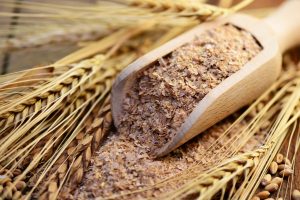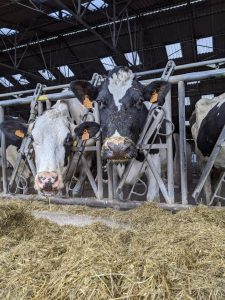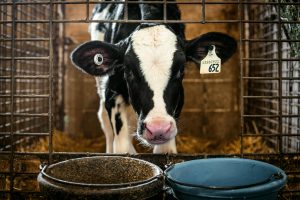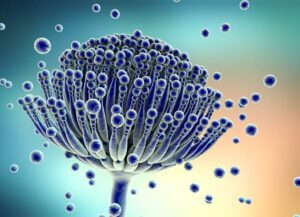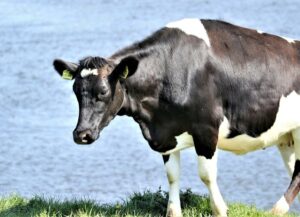Álvaro García
While ethanol is often associated with human-made products like beer and wine, it is far from an invention of civilization. Ethanol occurs naturally in the environment, particularly in sugar-rich substrates such as fruits and nectars in which yeasts like Saccharomyces cerevisiae ferment sugars into ethanol. This process, termed “make–accumulate–consume”, allows yeast to create an ethanol-rich environment that discourages bacterial growth while promoting its own survival. Ethanol acts as a natural defense mechanism because it is toxic to many competing microorganisms, such as bacteria, that might otherwise grow on the same sugars. Unlike bacteria, yeast has a higher tolerance for ethanol and can continue to metabolize it for energy. By creating an ethanol-rich environment, yeast reduces competition for nutrients, ensuring it maintains access to the sugar it needs to grow and reproduce. This ability to produce and tolerate ethanol gives yeast a significant survival advantage, allowing it to outcompete other microorganisms.
A byproduct of abundance
Wildlife, such as fruit-eating and nectar-sipping animals, frequently encounters ethanol in its natural habitat. Studies show that hummingbirds, for example, are not deterred by small concentrations of alcohol in sugar water, consuming it readily at 1% alcohol by volume. However, their intake decreases significantly at 2%, suggesting that these birds have adapted to the trace amounts of ethanol often present in flowers and backyard feeders.
Some plant species produce a surplus of fruit during summer that exceeds the needs of the animals consuming them. As this excess ripens and falls to the forest floor, natural fermentation by microbes like yeast converts sugars into ethanol. This ethanol becomes accessible to wildlife inhabiting both arboreal and terrestrial environments. Over time, ethanol—a byproduct of seasonal abundance—has become an occasional component of the diets of many species, shaping ecological interactions and evolutionary adaptations.
Wild deer and antelope occasionally consume fermented fruits on the forest floor, inadvertently ingesting ethanol produced through natural fermentation. This incidental dietary exposure underscores their adaptability to ethanol and its potential effects on digestion and metabolism.
Ethanol in cattle feedstuffs
In commercial livestock production, a similar process occurs when feeding fermented by-products like citrus pulp and grape pomace, which are commonly incorporated into dairy cow diets. Citrus pulp, rich in sugar, undergoes fermentation during ensiling, producing ethanol as a byproduct. Similarly, grape pomace, a residue from winemaking, ferments due to its residual sugars and exposure to yeasts. The ethanol content in these feeds varies depending on factors such as sugar levels, microbial activity, and storage conditions. These by-products offer a sustainable method to recycle agricultural residues while providing nutritional benefits. However, careful regulation is necessary to avoid adverse effects on animal health.
In dairy farming, condensed distillers solubles (CDS), a co-product of ethanol production, also sometimes adds ethanol to the diet. Beyond its ethanol content, Condensed distillers solubles is rich in crude protein (15–30%), digestible fiber, fat, and essential minerals, making it a nutrient-dense and versatile feed ingredient. Its residual ethanol enhances rumen microbial activity, promoting efficient fermentation and improving the utilization of dietary fiber and energy. These effects translate into higher milk production and better feed efficiency.
In addition to its nutritional benefits, CDS conditions TMR by adding moisture and improving their physical consistency. This reduces sorting behavior, ensuring cows consume a more uniform ration. Moisture also aids in the thorough mixing of dry ingredients, enhancing the palatability of the ration and encouraging greater feed intake.
Given the ethanol content range of CDS, if this feedstuff were added to the TMR at 5%, 10%, or 15% of the total mixed ration, the ethanol contribution to the diet would be as follows:
- At 5% CDS: Ethanol contribution ranges from 0.2% to 0.5%.
- At 10% CDS: Ethanol contribution ranges from 0.4% to 1.0%.
- At 15% CDS: Ethanol contribution ranges from 0.6% to 1.5%.
The ethanol concentration resulting from adding condensed distillers solubles (CDS) at 5%, 10%, or 15% of the total mixed ration (TMR) can have positive effects on dairy cow performance when managed appropriately. Ethanol is readily metabolized by rumen microbes into acetate, a key volatile fatty acid that serves as an energy source, supporting efficient fiber digestion and overall rumen fermentation. This additional acetate can enhance energy metabolism without compromising energy efficiency or milk composition.
Effect of ethanol on lactating dairy cow diets
Recent studies demonstrate the potential benefits of incorporating ethanol into dairy diets. In one trial, the addition of 5% ethanol to a TMR increased both dry matter intake (DMI) and milk yield. Cows fed the ethanol-enriched diet consumed more feed (23.7 kg/day) and produced more milk (37.9 kg/day) compared to those on a control diet (22.2 kg/day DMI and 35.8 kg/day milk yield). The increased milk production observed in this study can be attributed to ethanol’s role in rumen fermentation. Rumen microbes metabolize ethanol to acetate, providing an additional energy source and supporting fiber digestion.
The conversion of ethanol to acetate in the rumen highlights its contribution to energy metabolism. Research indicates that ethanol supplementation does not negatively affect energy efficiency or milk composition. In fact, ethanol can act as a glucose-sparing agent, redirecting glucogenic substrates to support milk synthesis and improve production efficiency.
Blood metabolite analysis from cows on ethanol-enriched diets revealed no adverse effects, with glucose, insulin, and non-esterified fatty acid levels remaining within normal ranges. Sensory evaluations also showed no negative impact on milk aroma, taste, or quality, demonstrating that ethanol can be safely included in dairy diets.
The inclusion of ethanol, whether through natural exposure, using fermented byproducts or feed additives, reflects the adaptability of ruminants to this compound. Corn distillers solubles not only improves feed palatability and nutrient intake but also enhances production efficiency. By incorporating this coproduct into well balanced diets, producers can optimize cow performance.
Alcohol Concentrations in Species Context
Above we were stating hummingbirds can tolerate low ethanol levels (1% alcohol by volume) in nectar but show reduced consumption at higher concentrations (2% or more). This likely reflects their small size and rapid metabolism, which makes even minor increases in ethanol concentration more impactful. Their preference for 1% ethanol indicates an upper threshold, beyond which it likely interferes with their energy intake or flight capability.
In the referenced experiment in dairy cows, ethanol made up 5% of the diet’s dry matter (DM). On a 23.7 kg DM intake basis, this is approximately 1.2 kg of ethanol per day. Ruminants have a remarkable ability to utilize ethanol because rumen microbes can convert it to acetate, a volatile fatty acid (VFA) that serves as an energy source for maintenance, milk synthesis, and fiber digestion. Thus, ethanol at 5% DM in cows is not only well-tolerated but also beneficial, as it supports rumen microbial fermentation and enhances milk yield.
The key difference is that ruminants have microbial systems that break down ethanol efficiently into acetate, which hummingbirds lack. Hummingbirds metabolize ethanol more like other monogastric animals, where high ethanol levels can impair performance. Dairy cows have evolved to utilize a variety of fermentable substrates, including ethanol, especially in small to moderate quantities. This experiment demonstrated positive effects at 5% DM without any adverse health effects. Hummingbirds’ small body size makes them far more sensitive to ethanol concentrations compared to larger animals like cows. For comparison, a 5% ethanol diet for cows would far exceed tolerable levels for hummingbirds if scaled to body size.
References
Bowland, A. C., Melin, A. D., Hosken, D. J., Hockings, K. J., & Carrigan, M. A. (2024, October 30). The evolutionary ecology of ethanol. Trends in Ecology & Evolution,
Daniel, J. L. P., Amaral, R. C., Sá Neto, A., Spoto, M. H. F., Santos, F. A. P., & Nussio, L. G. (2013). Performance of dairy cows fed high levels of acetic acid or ethanol. Journal of Dairy Science, 96(1), 398–406.
University of California – Berkeley. (2023, June 22). Do hummingbirds drink alcohol? More often than you think: Flowers, backyard feeders likely provide hummingbirds with alcohol, thanks to fermenting yeast.
© 2025 Dellait Knowledge Center. All Rights Reserved.



